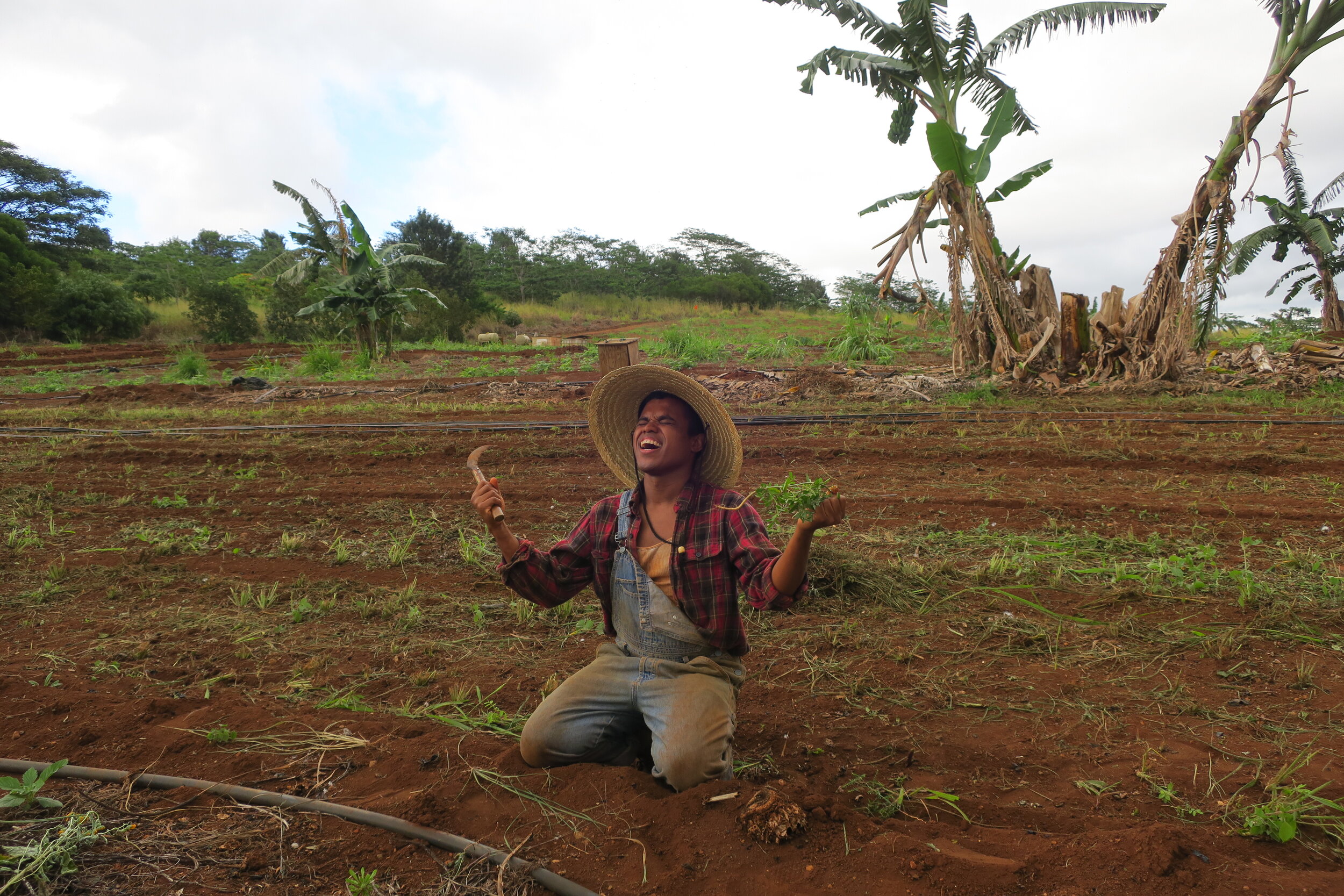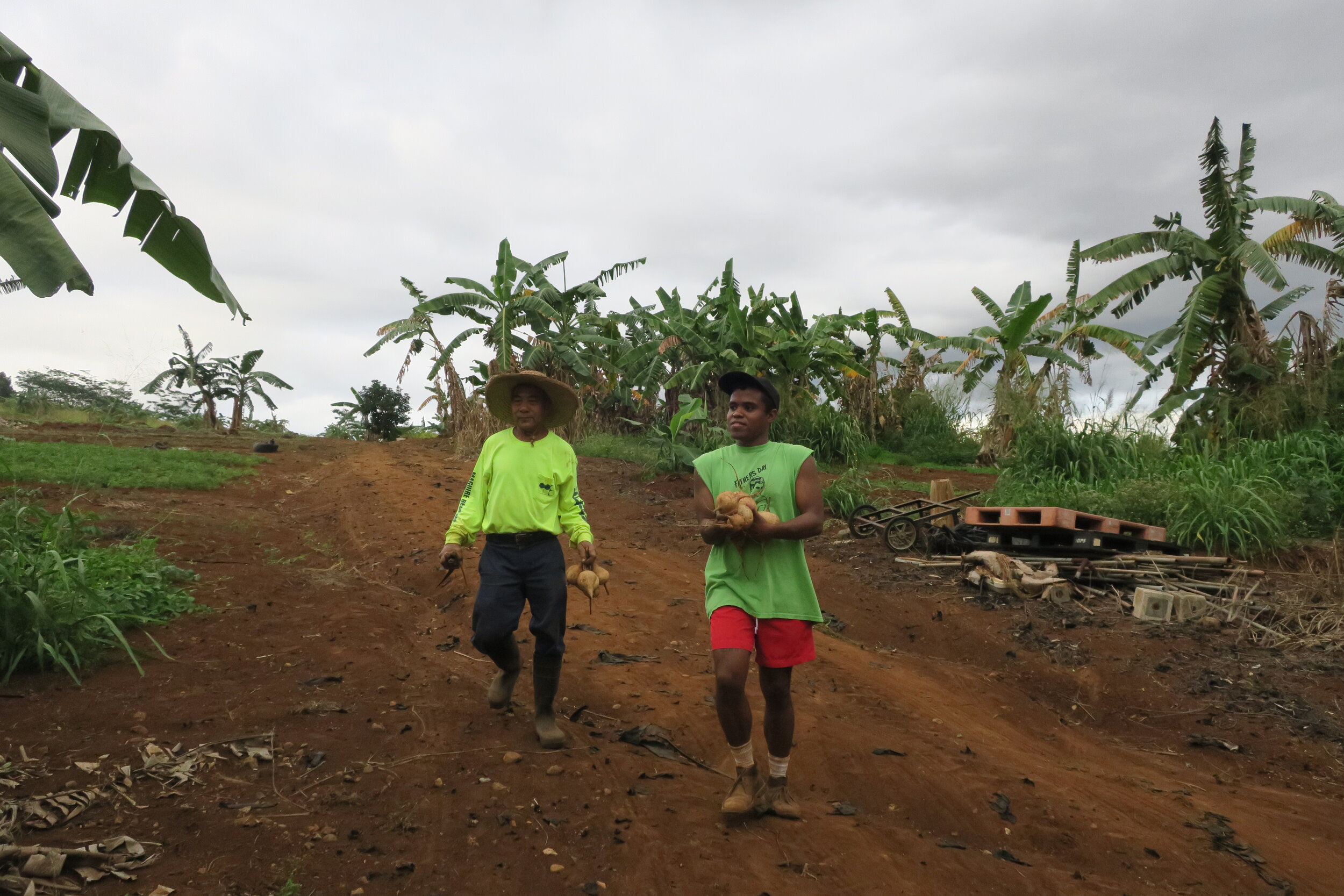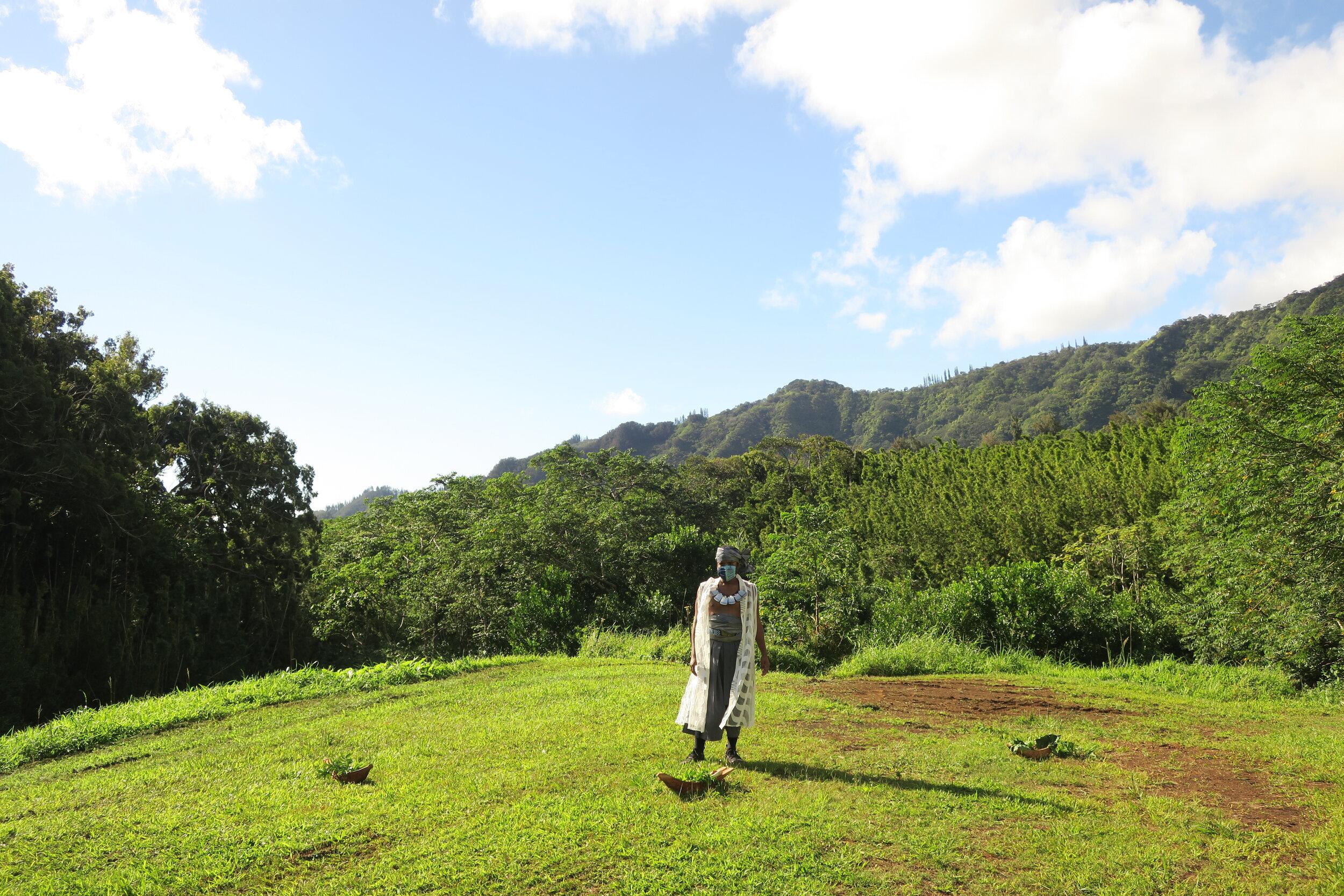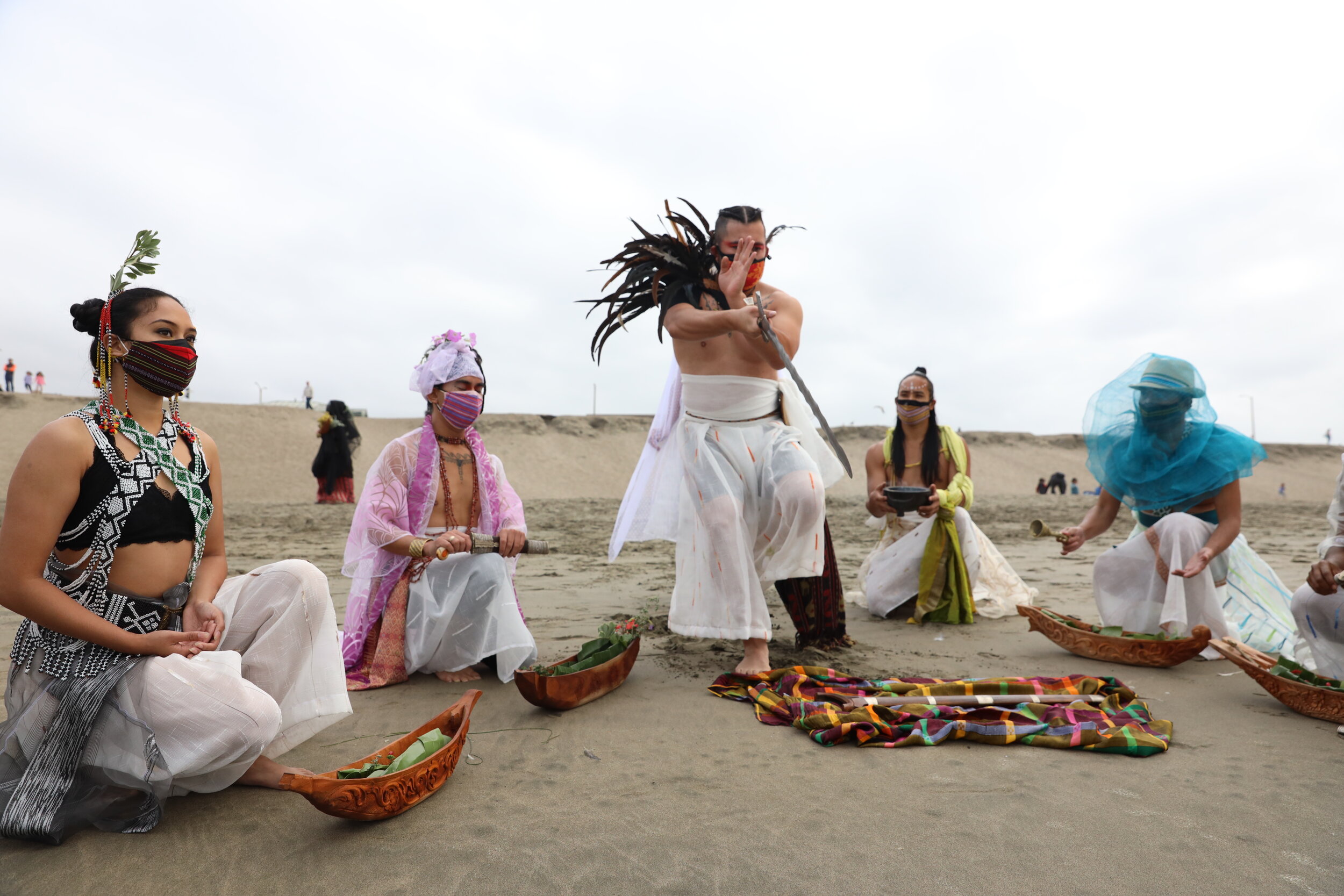Hawaii Artist’s Retreat and Film Production
Oahu, Hawaii
January 6–14, 2021
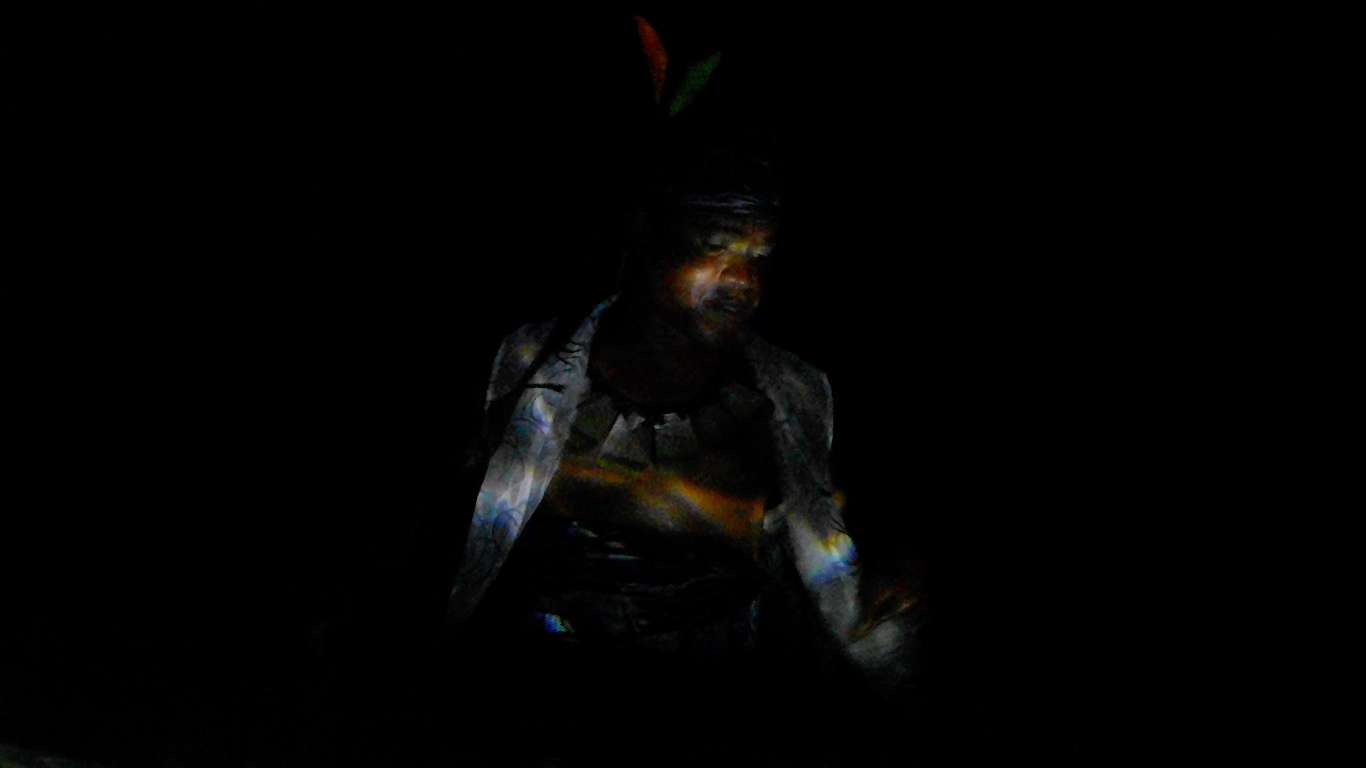
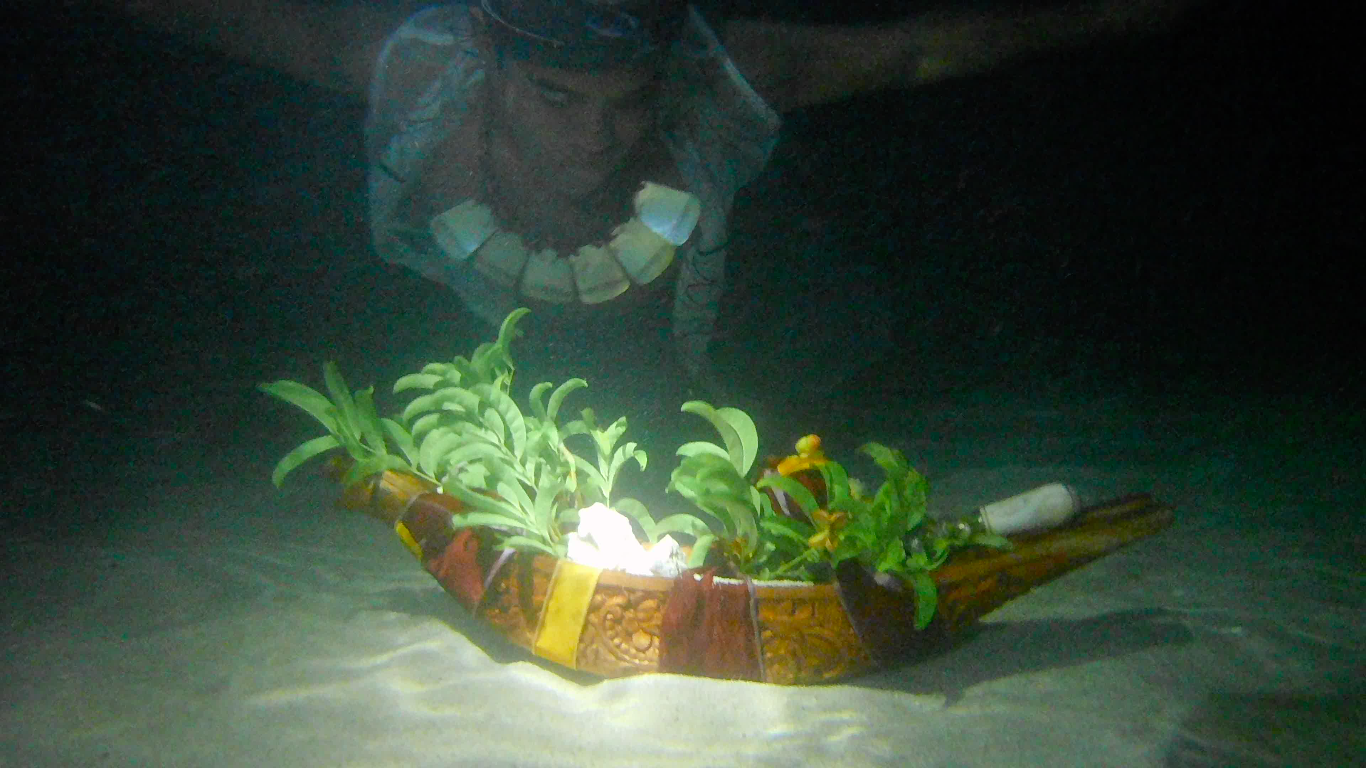
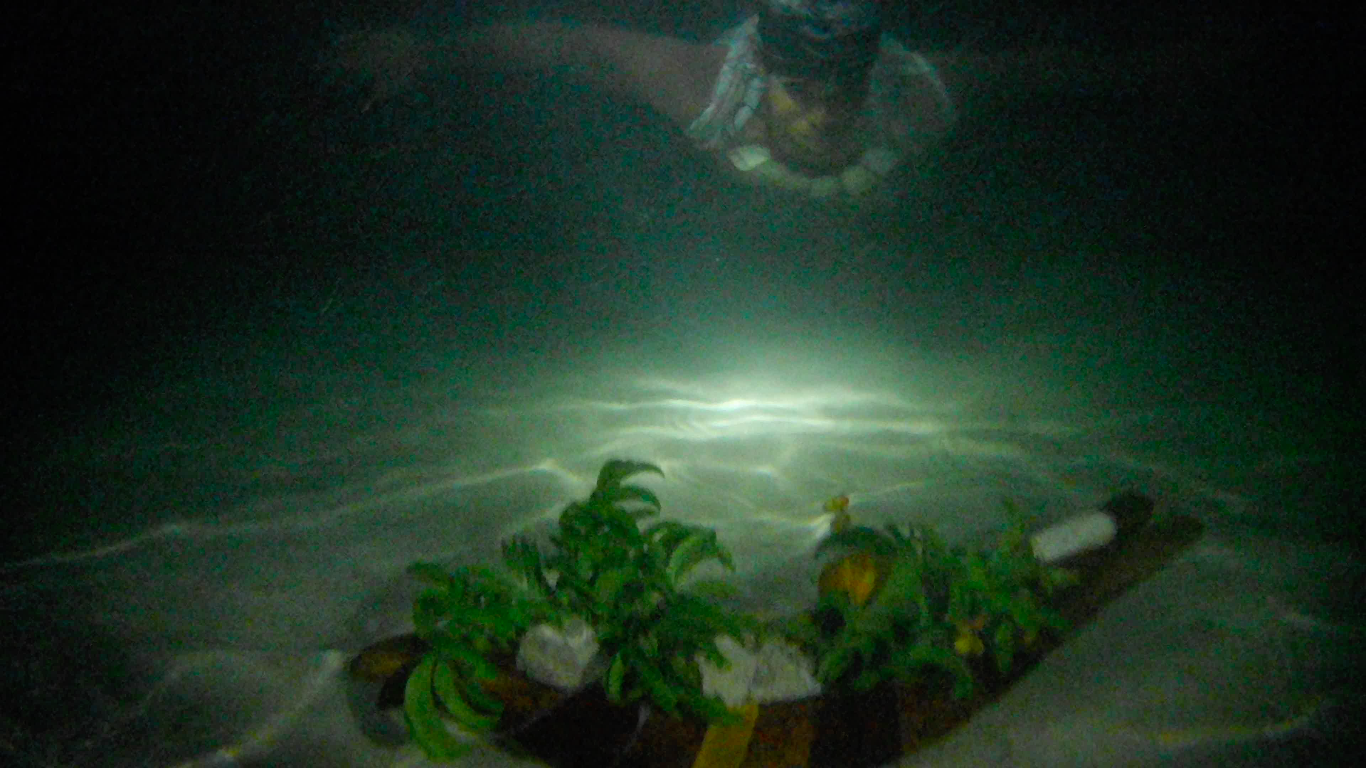
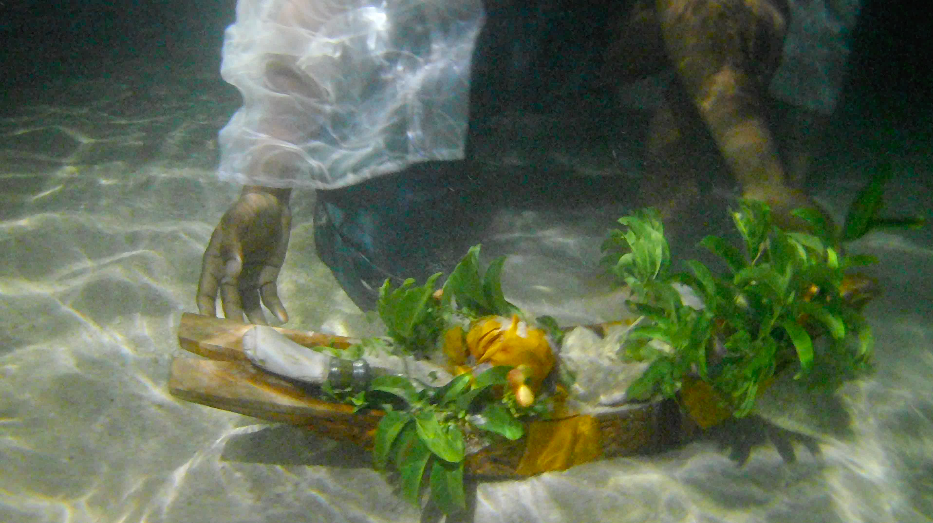
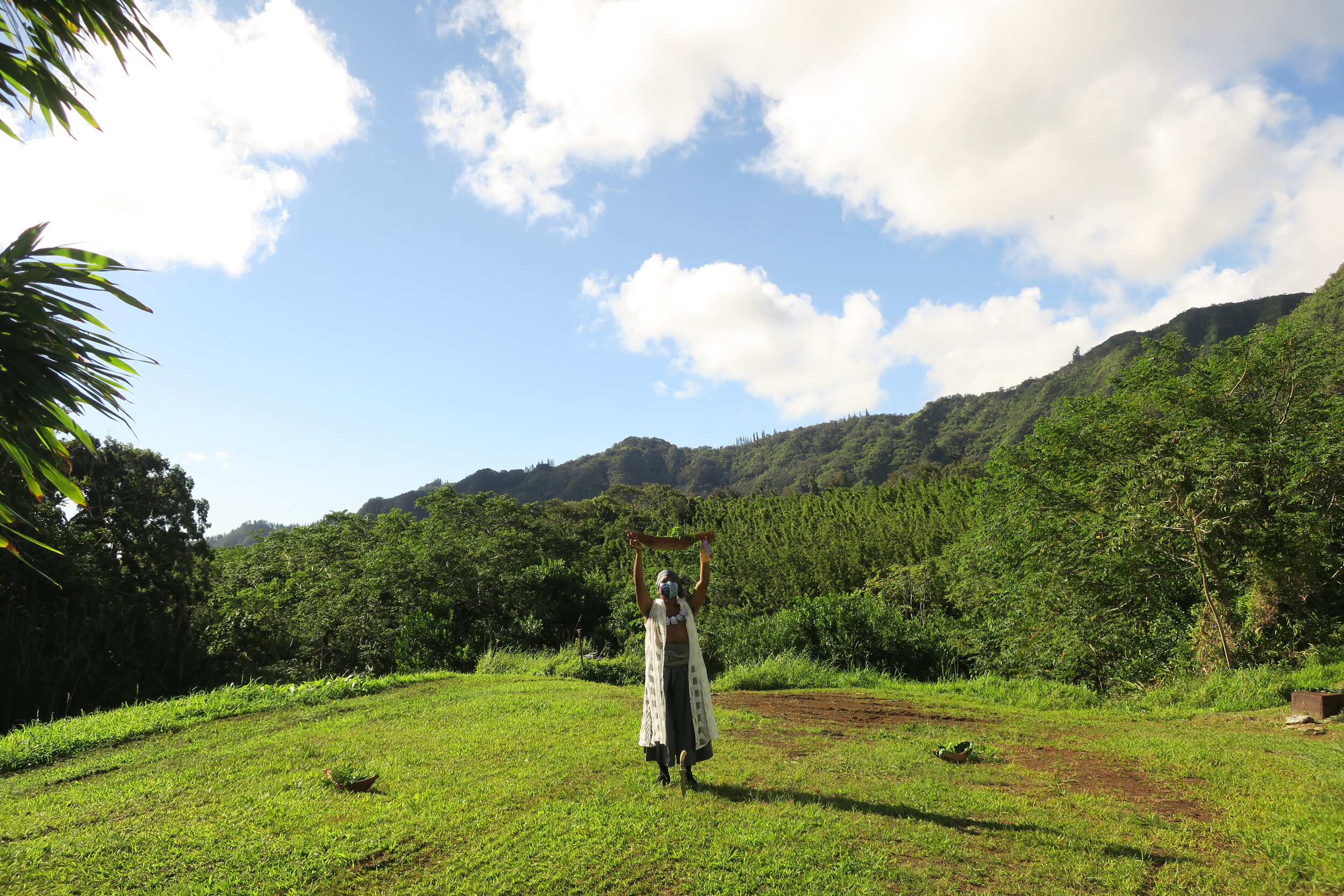
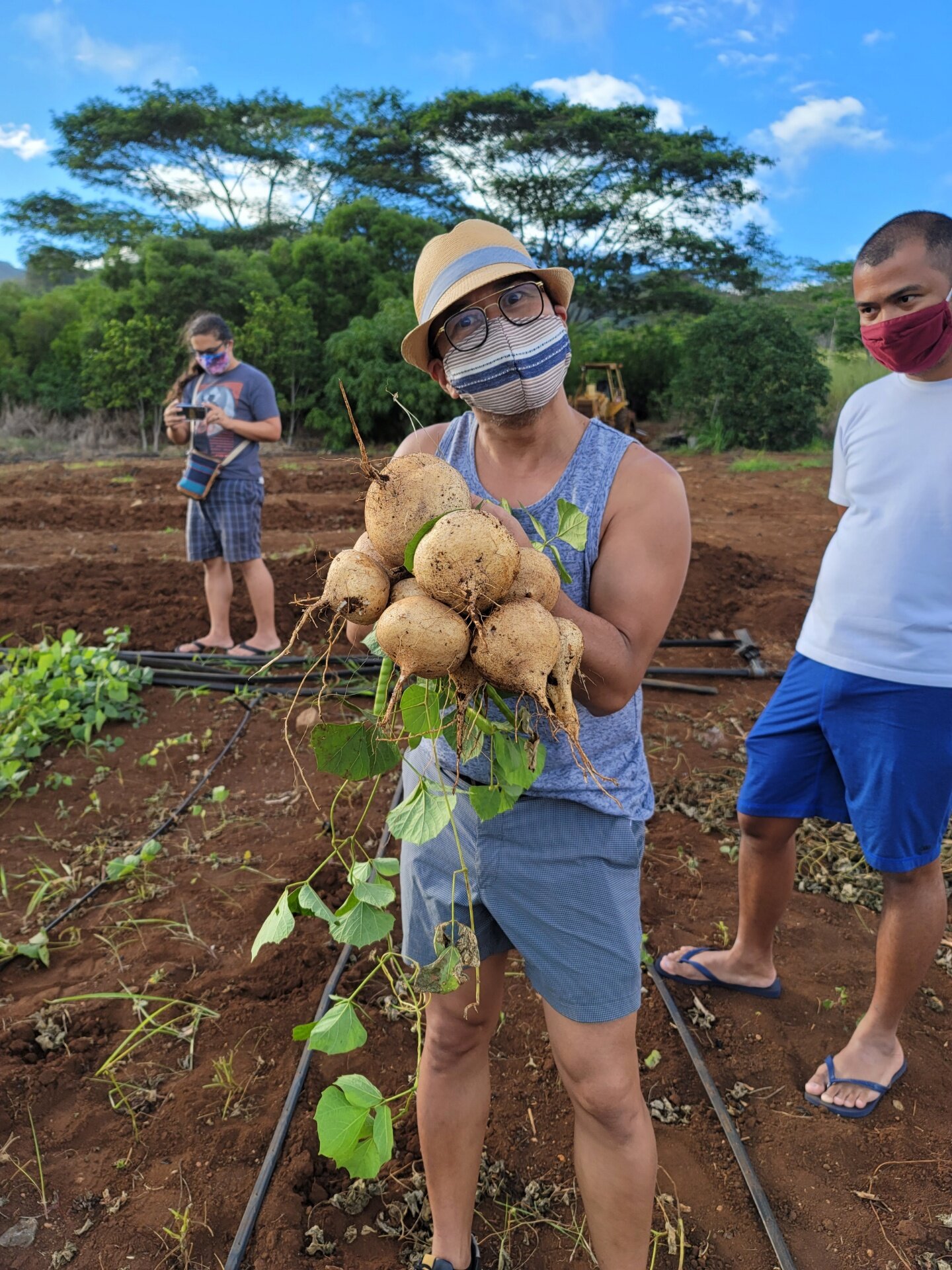
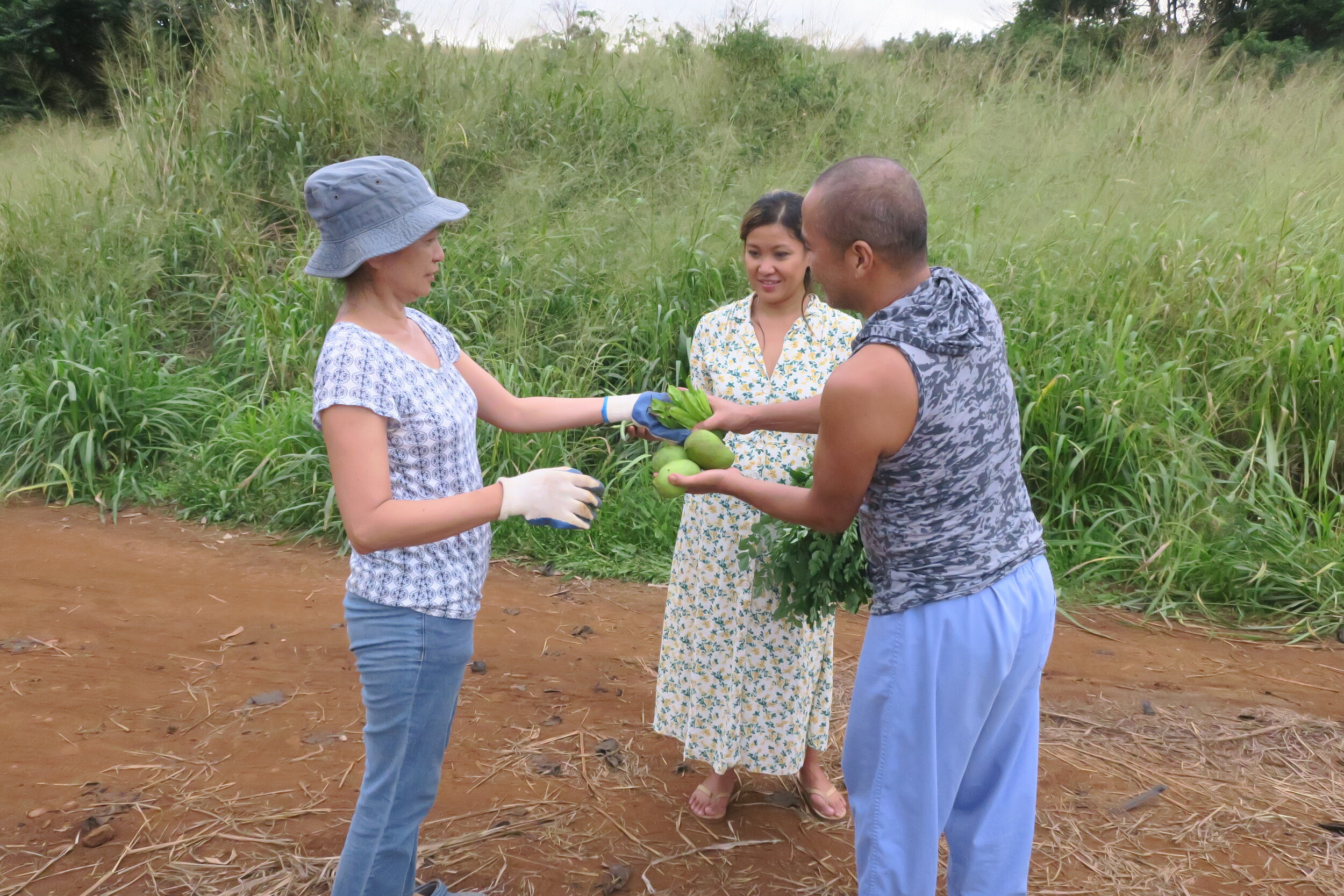
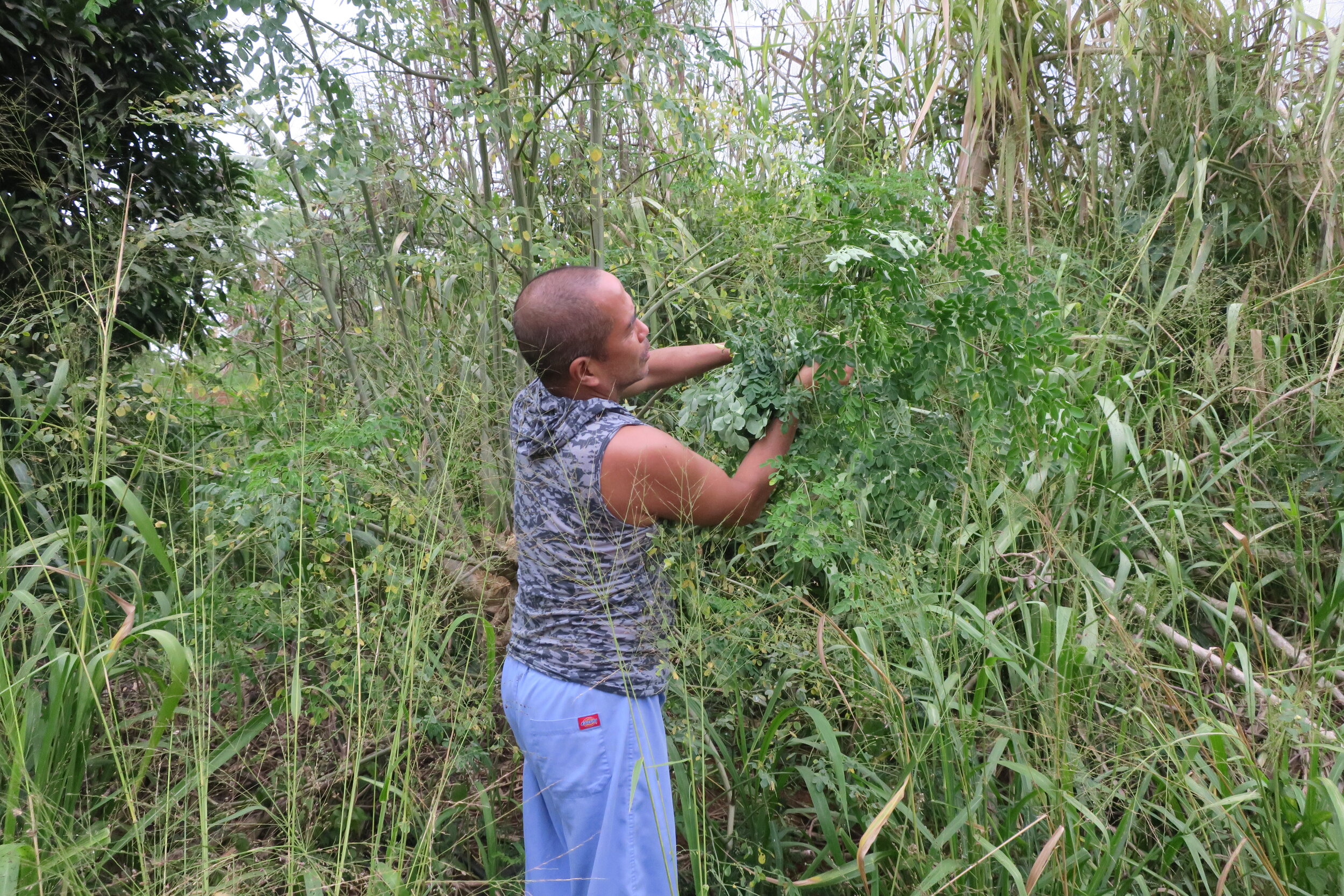
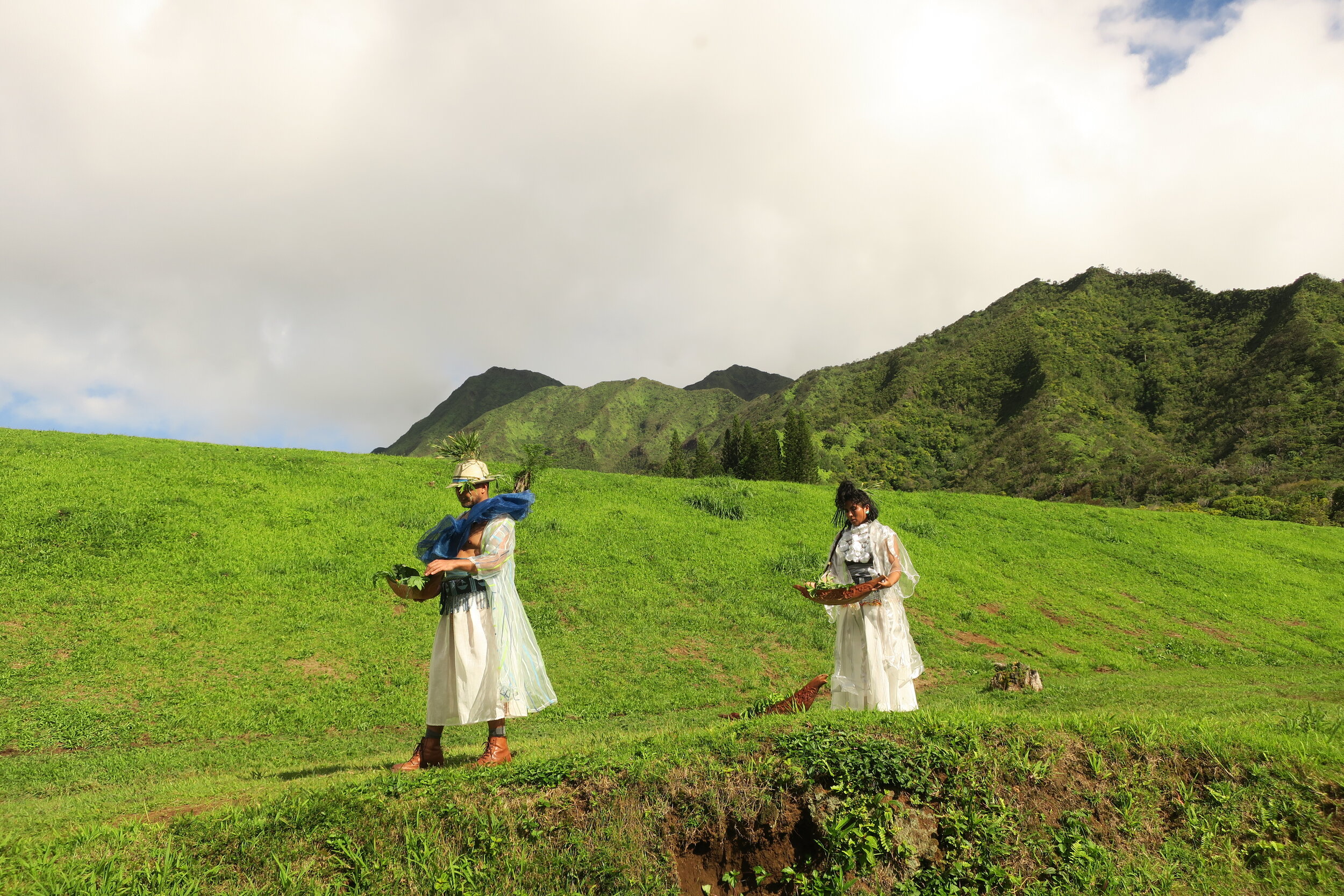

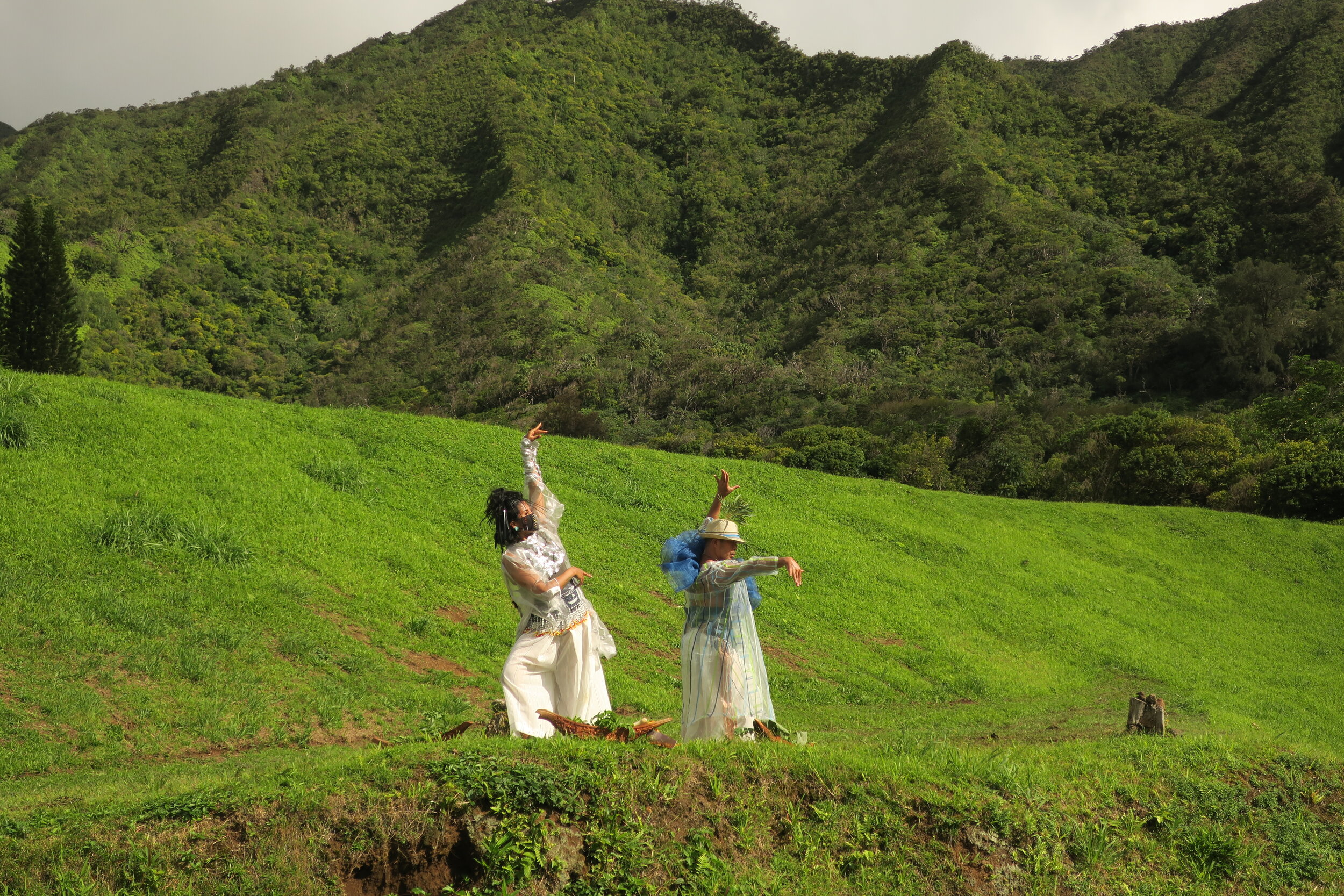

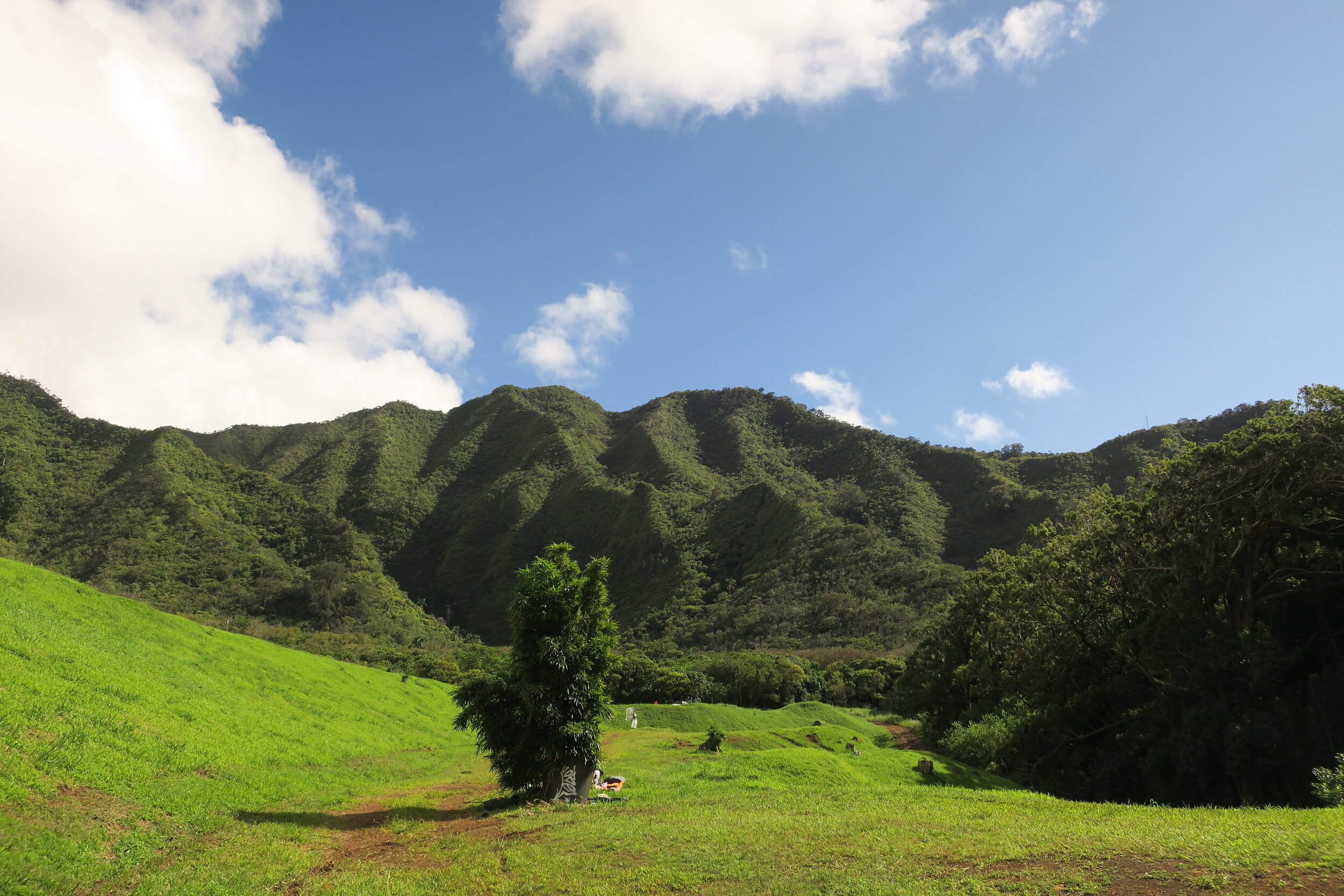
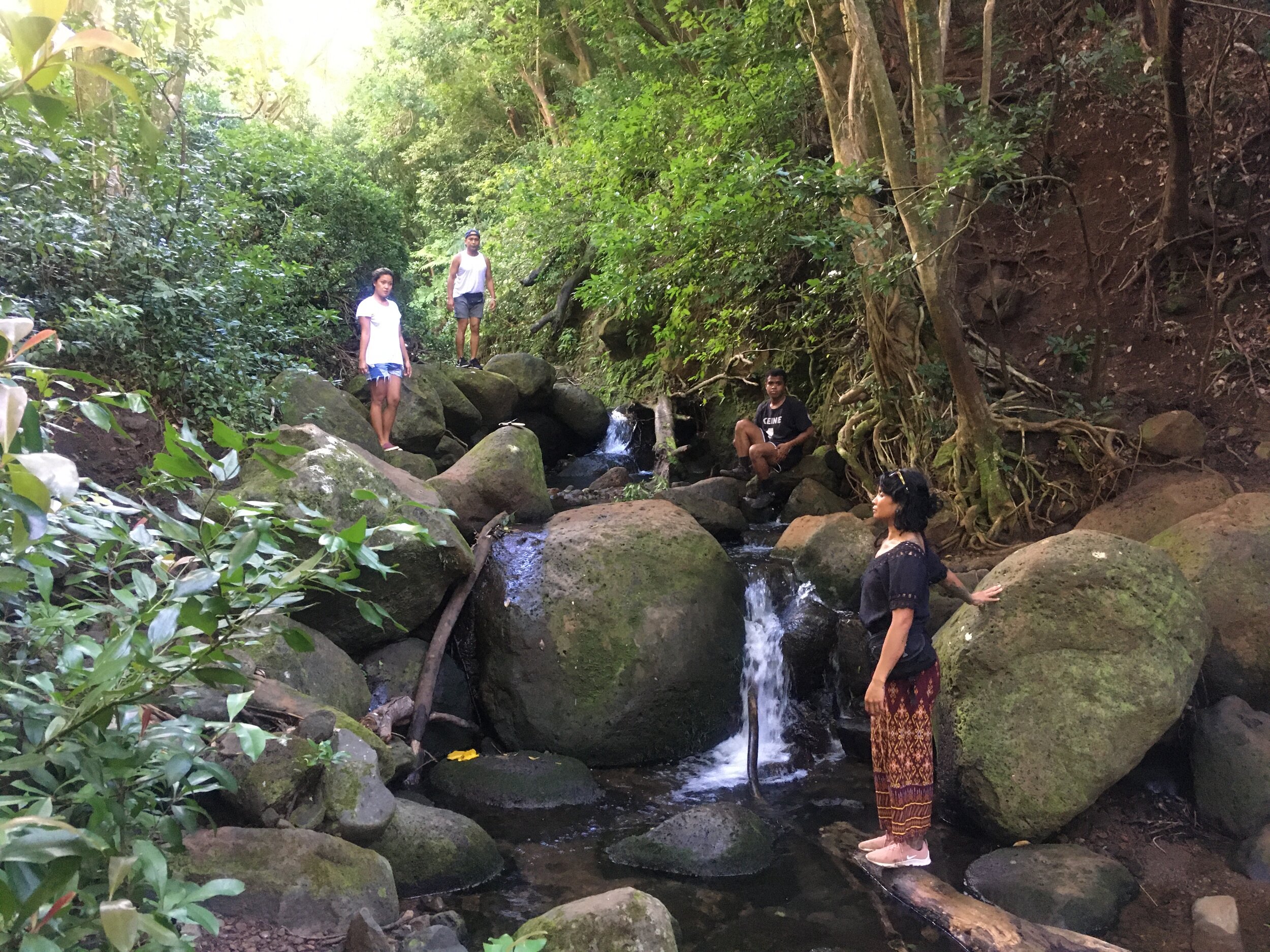
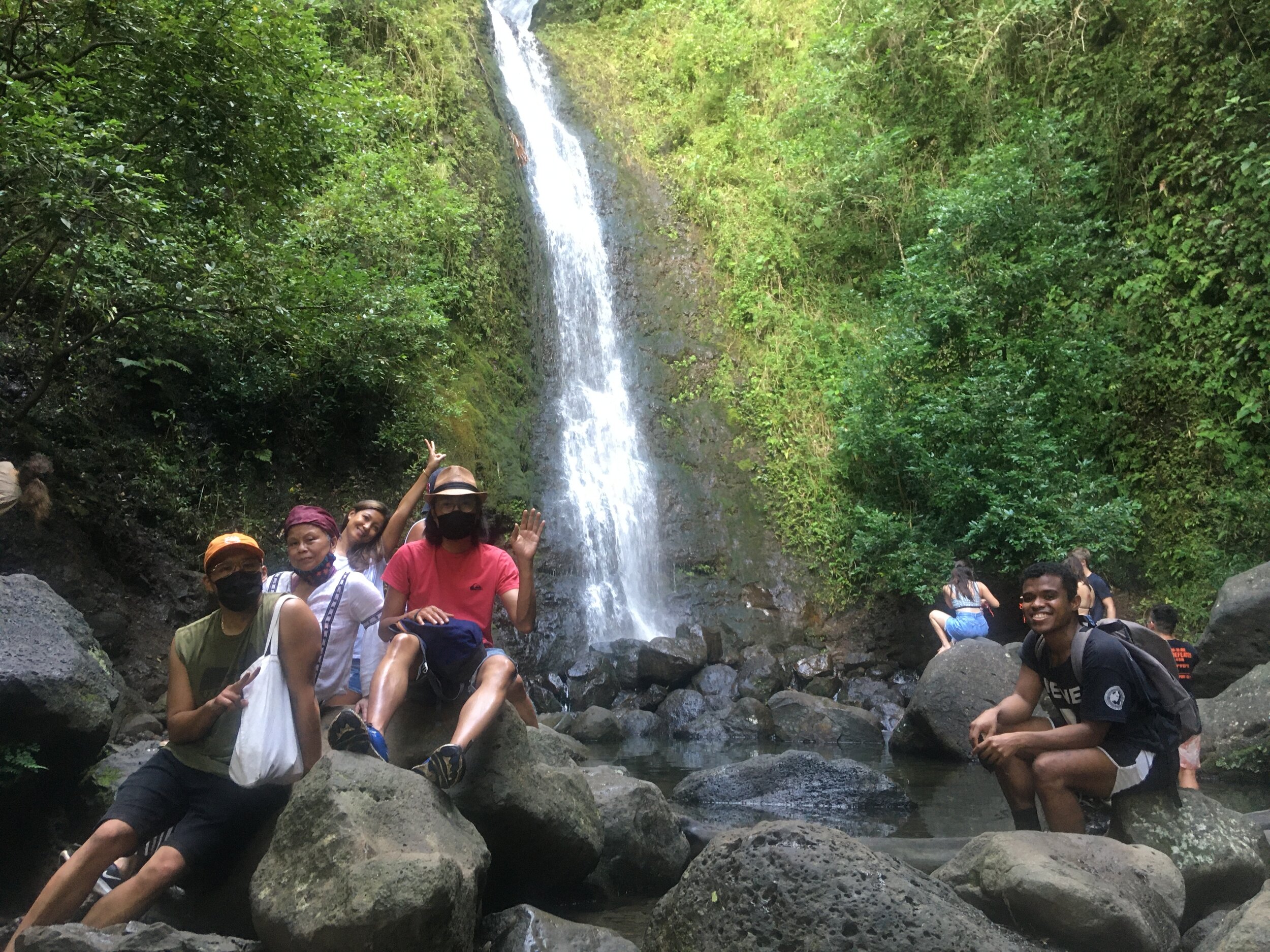
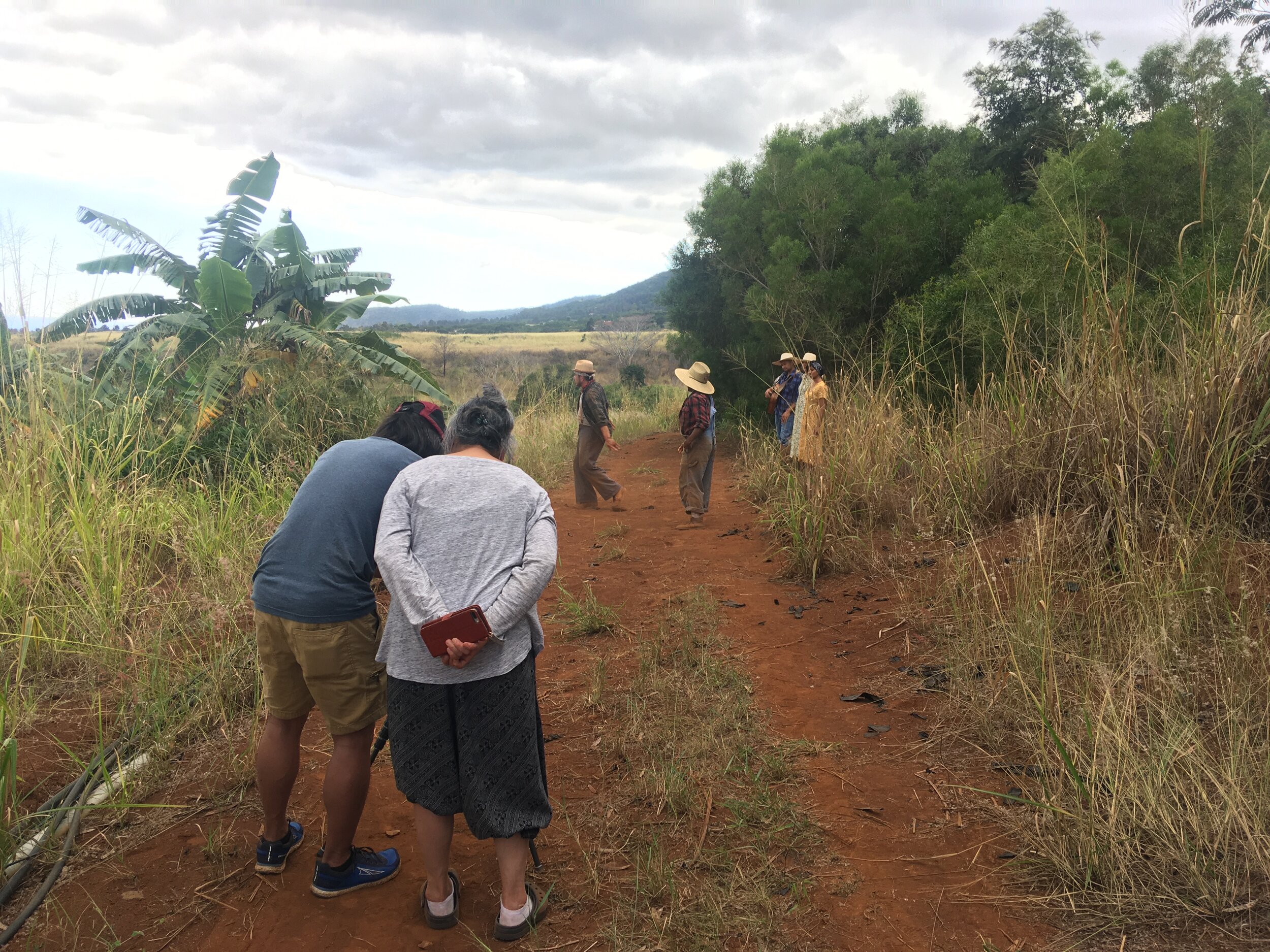
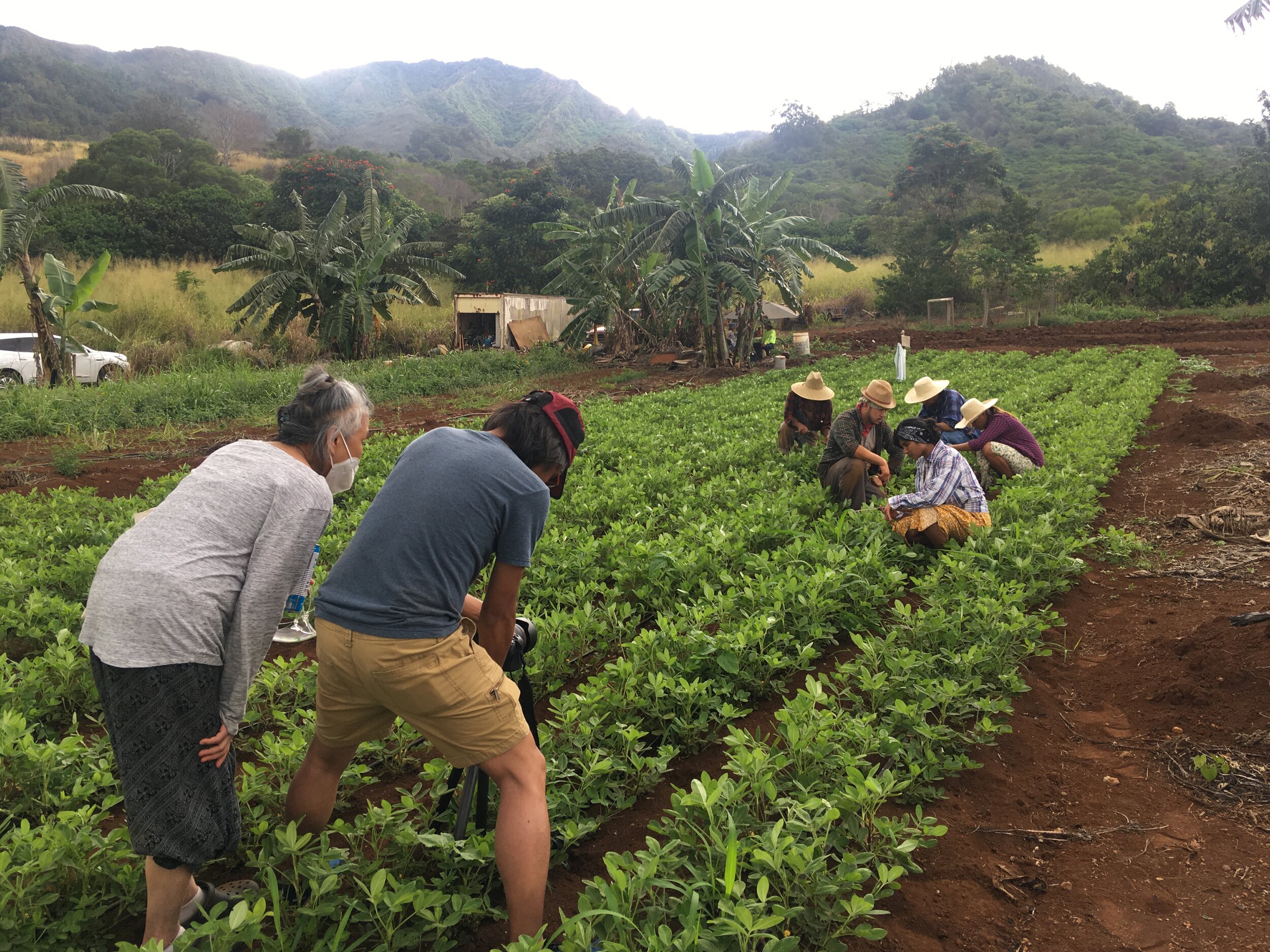
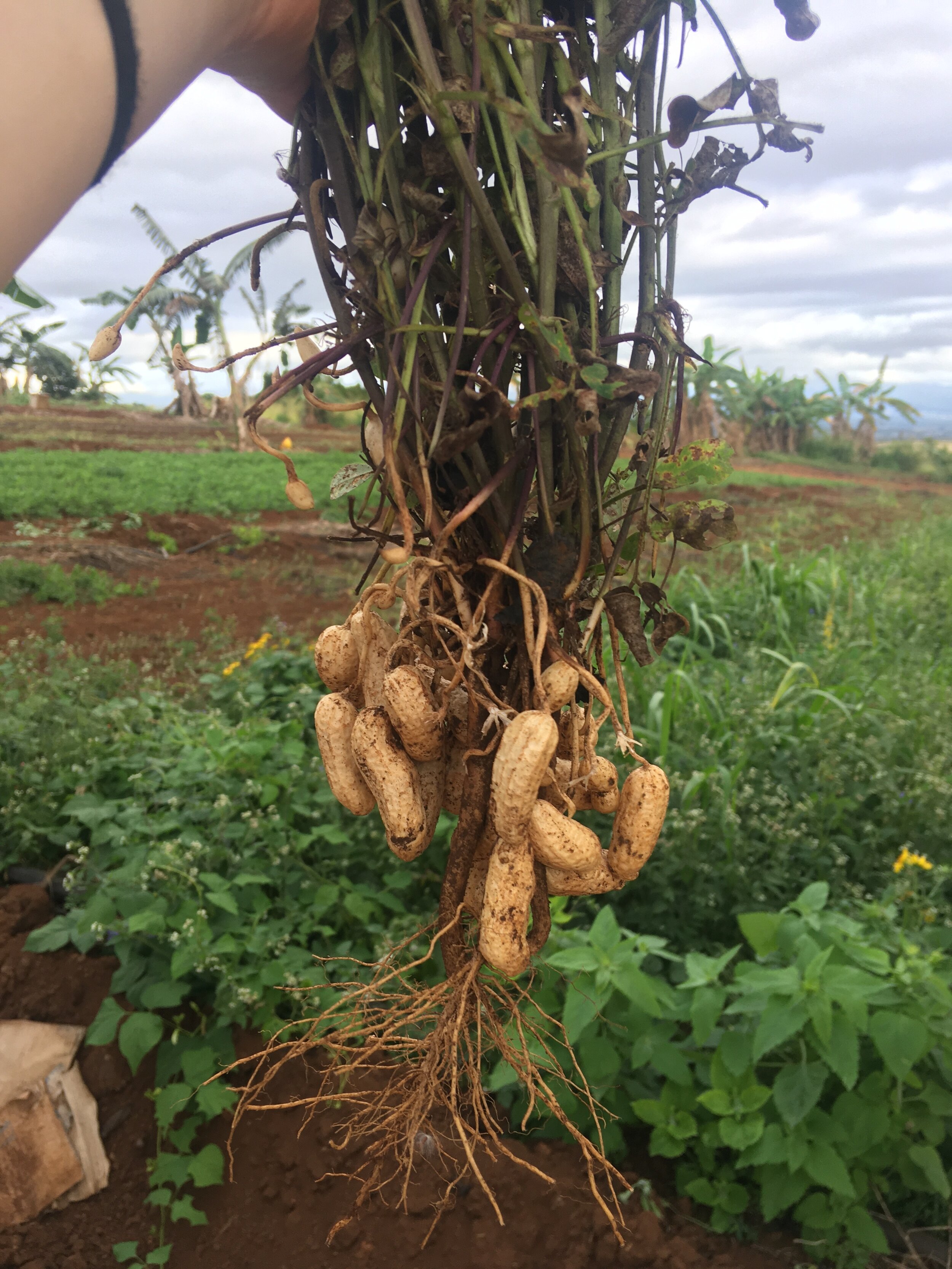
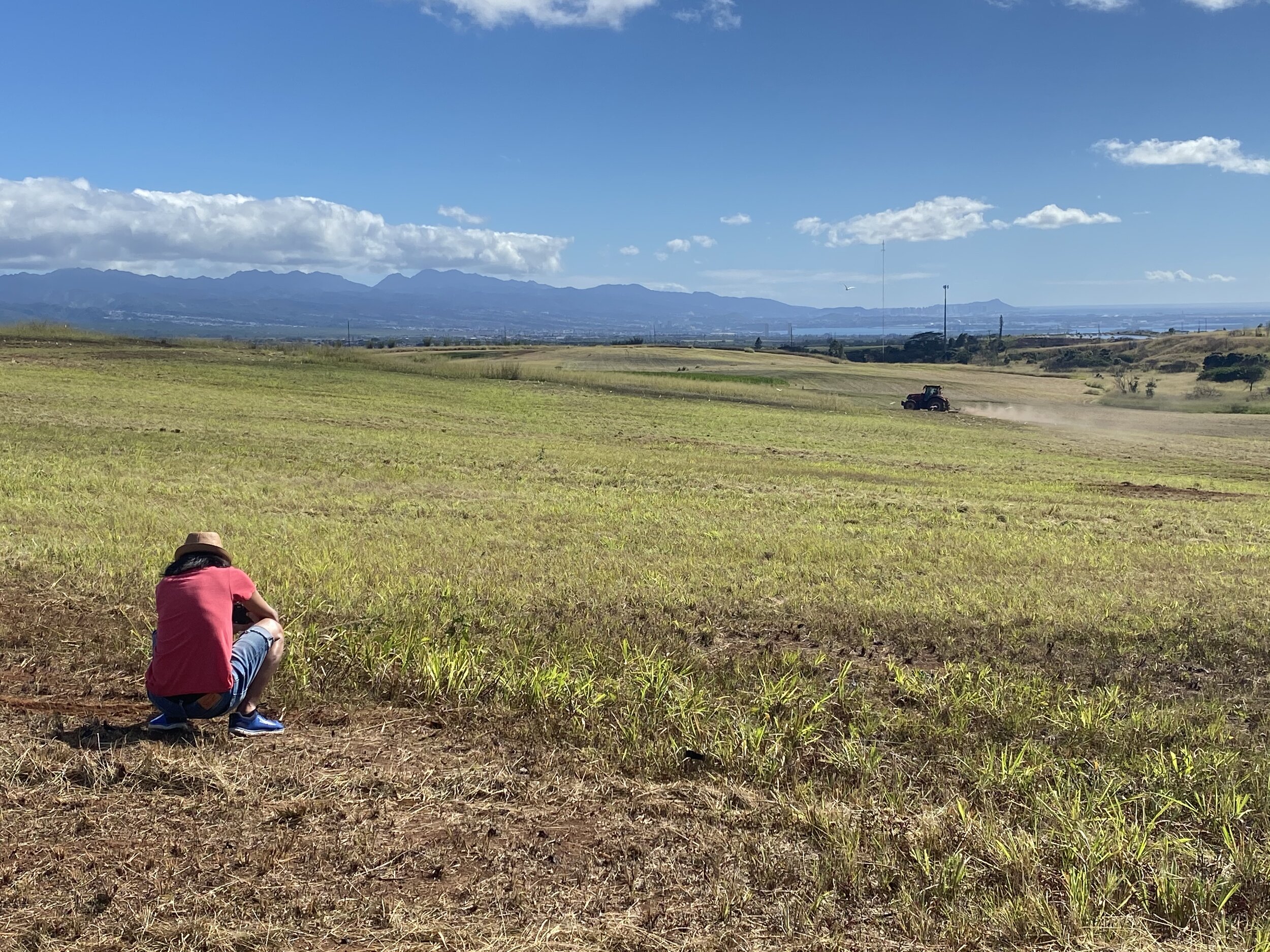


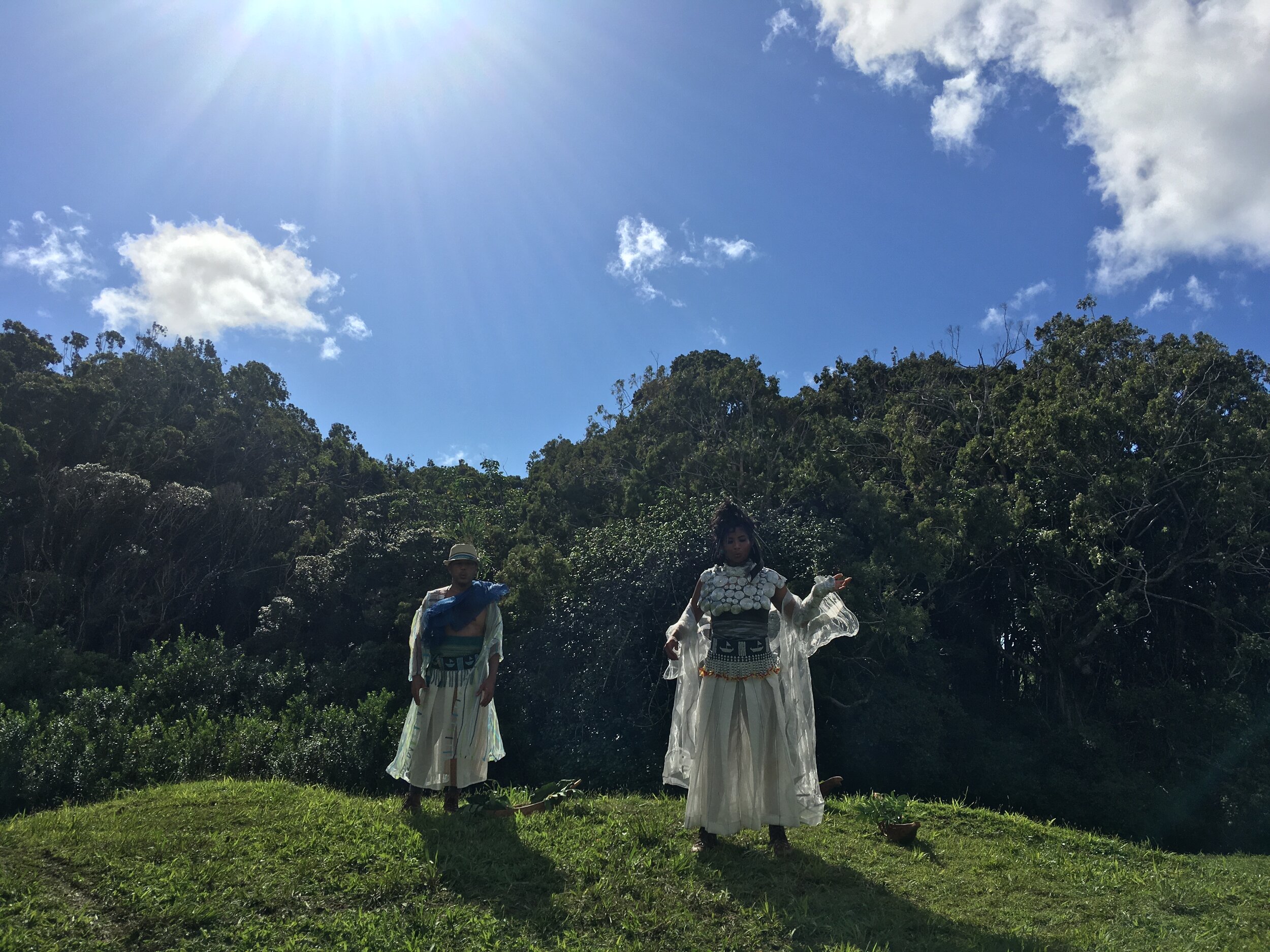
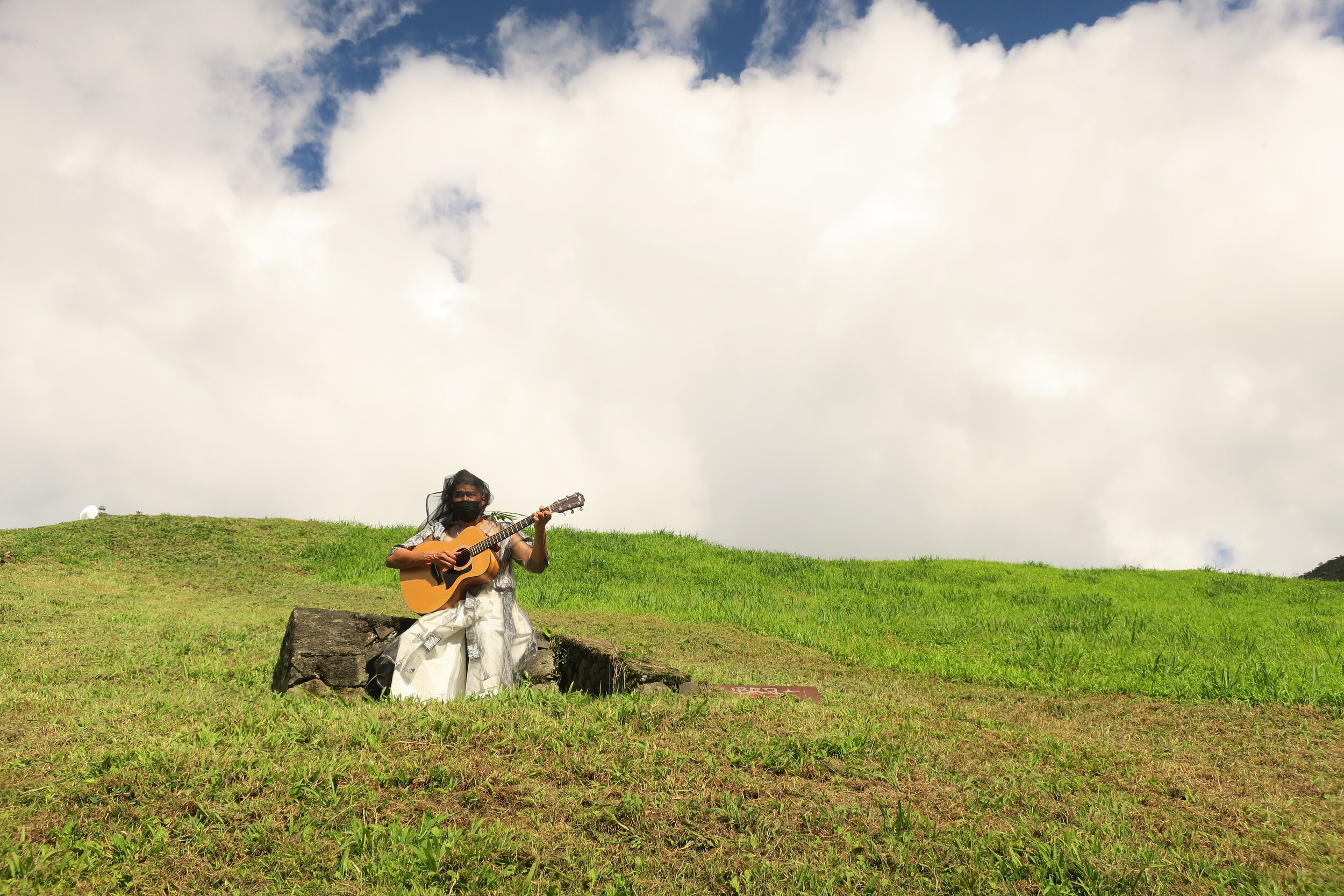
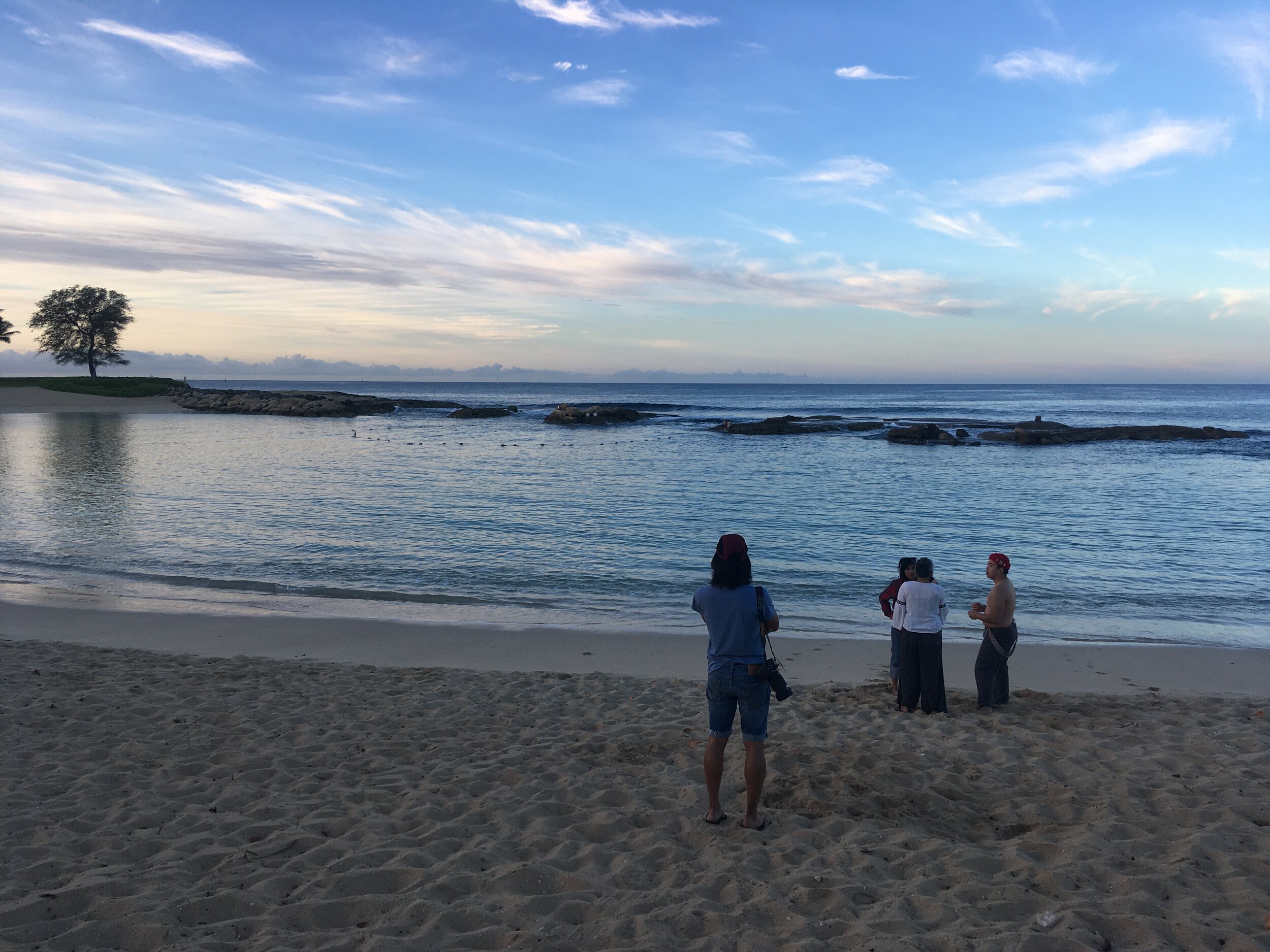
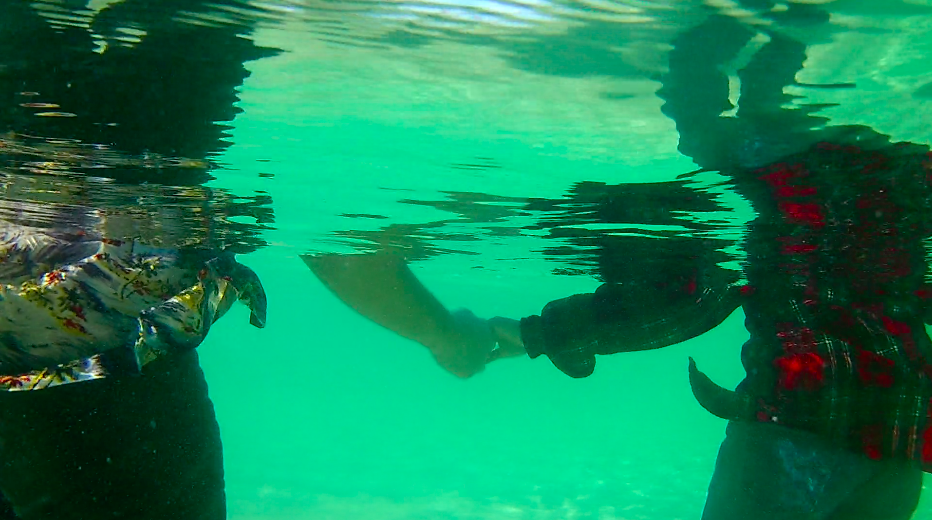
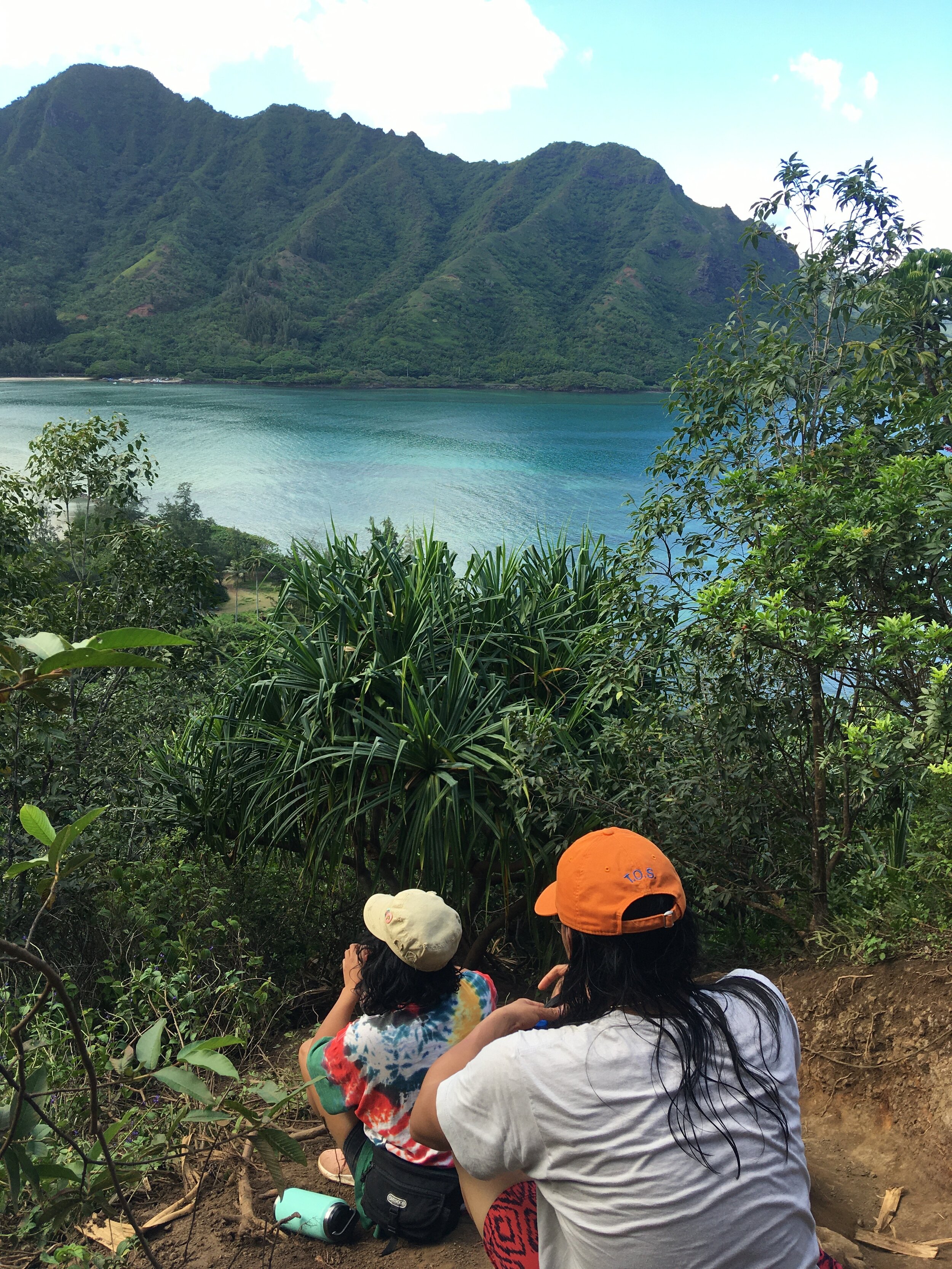
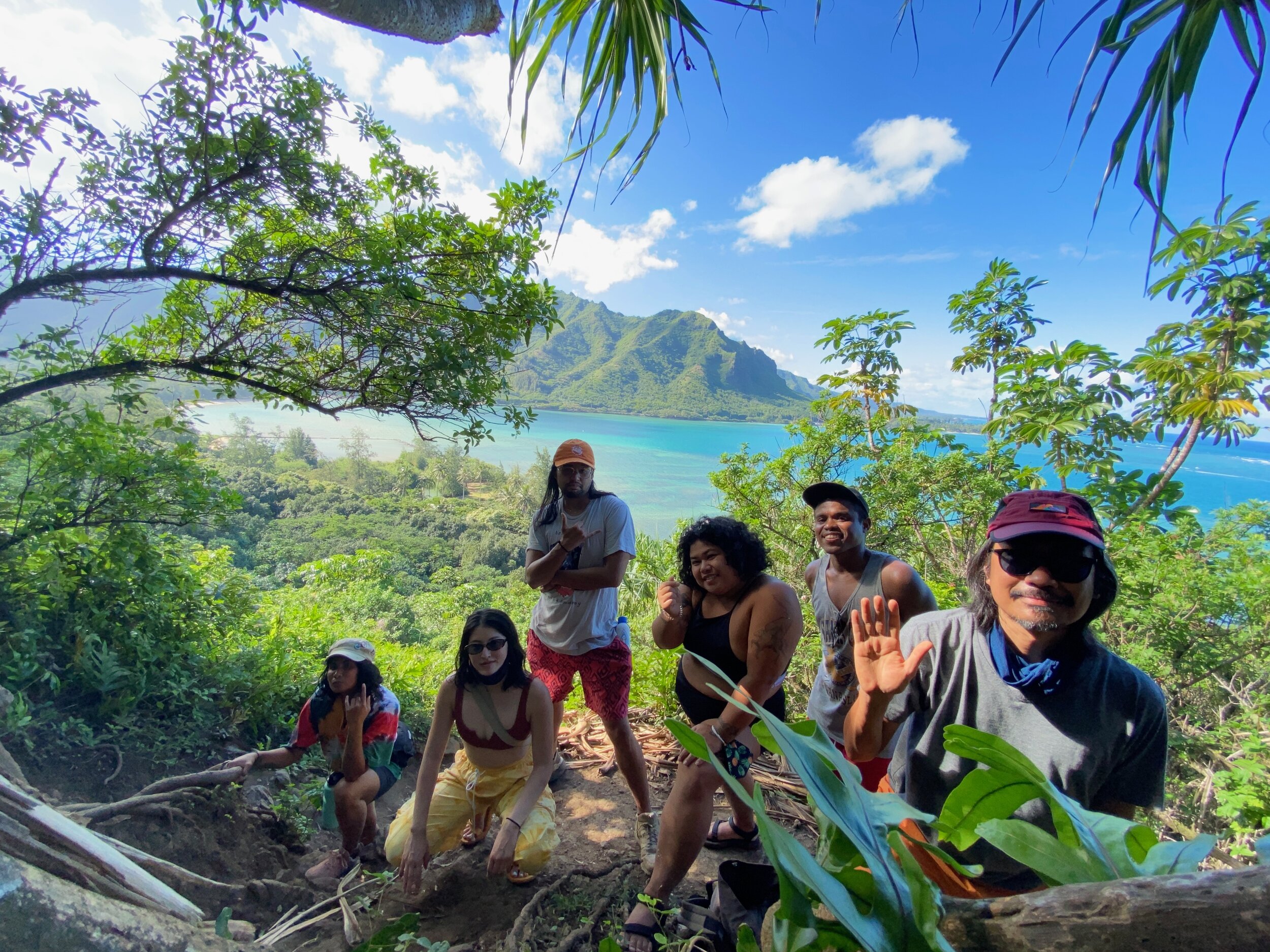
2020 was quite the year. All of our plans were upended including our programs with live performances and events. The world premiere of In the Belly of the Eagle: Man@ng is Deity was indefinitely postponed and the live event for the Lakbai Diwa, Diasporic Spirit project, that included a ritual dance performance and mural paintings, had to be significantly scaled down for the health and safety of those involved and the community due to the pandemic.
In spite of it all, we persevered and pushed forward. We were forced to think of other ways to manifest and carry on with these projects at hand. With the world having embraced virtual platforms with more demand for online content, and with the projects being multimedia productions, it was a logical move to turn these projects into dance films.
Considering the need to film on location with the dance artists, not to mention a much needed break from all that was going on, the idea of coming together as a social pod or, more appropriately, an artist bubble was floated. It was a rigorous process, to say the least, but going through logistical hurdles while heeding the necessary health and safety protocols made it possible. Going to Hawaii for an artist’s retreat and film production was a blessing. There was a sense of gratitude that we held while doing all that we were able to do in the middle of a raging pandemic.
It wasn’t all smooth sailing. There were instances leading to and during the trip that things did not seem to go as planned. All we could really do was to set our intentions and try our best in what we were trying to accomplish. From figuring out the right timing and the availability of a COVID-19 test and the delays with results, to not being able to film a scene due to technical issues and the weather, to the reality of how much time and effort it takes to film a scene, we faced the obstacles and limits that we ran into with grace and acceptance. If it was not working in spite of all our efforts, then it wasn’t meant to be. At least, we tried. Yet, somehow, we were able to get what we needed.
The fact that this trip happened and that we all are safe and healthy is remarkable. We were afforded a brief respite, a sense of “normality,” and the freedom to create. In the midst of political chaos and a new year, we held space, made art, held ritual, danced, and gave offerings to all those who came before us.
There is still more that needs to be done. We look forward to sharing with the community the fruits of our creative undertaking.
Filming of In the Belly of the Eagle: Man@ng is Deity
On Process and Performance
Dre ‘Poko’ Devis, Dance Artist, on duet scene: What came out of it was really beautiful in many different ways—the footage that we got as well as the experiences I had with each and every one as individuals.
I felt on so many levels that it was really feeding me. That first shoot, when we got there and we were in character and in costume I was ready to go, also the camera chemistry with my partner Jon really helped as well.
Jonathan Mercado, Dance Artist, on duet scene: Let's just pick a scene and pick a part of the choreography that we could focus on and then expand and then see how we can get some more out of it. But overall I thought that first scene was pretty magical, the fact that we had to hike through mud and the bamboo forest grove to be able to get to an open field area. So that section plus even just seeing the overall scenery was so important and really powerful.
To be able to dance in those spaces outside of a normal black box theater or black box space made it feel so much more of a release like we're getting a chance to touch the ground, swim through the water. You're not imitating through these actions, you're actually doing the action of it.
Being able to have that space and have that surrounding really transforms the movement and to adapt to the movement. So going around the tree, I'm not just trying to peek through, there's a tree there, we don't have to have our movements miming what the action is, we are there to be able to use that space and the environment to our advantage to be able to help whatever is happening with the scene.
Joshua Icban, Composer and Cast: It was really cool because with Man@ng I was never really around when the dance portion was happening, I only got to see it at the theater. So it was really amazing to me to see you all be in your element creating and for me to just observe.
It was an honor to experience the music I made in my room travel and be alive somewhere. I got to live in the score & be a bit closer to the source than just in my imagination. It was one of my really big highlights to witness everyone's creative reciprocity.
Dre ‘Poko’ Devis on the presence of live music: I think that the aspect of live music was very special for me. I actually remember when Josh first played it and we all were like, oh my God, that's it, you know. We got to have it there, we get to listen to it being played and it be alive the whole time that we were filming. It was really special.
On the Spark and Convergence of
Historical, Personal, and Fictional Narratives
Lydia Querian, Dance Artist, on her connection to the farm: When I told my mom that we were shooting Man@ng, and I never knew about this, she said that apparently my grandfather or my great-grandfather was a Sakada. He came here for a few years. He went back. He bought a bunch of land in Nueva Viscaya, and that's where my mom grew up and prior to that they were trying to sell the land because they don't want to deal with it or they don't want to pass on the responsibility of having to deal with it anymore. And I was telling her like why would you sell it? Why don't I buy it? I was just telling her I'll buy it. I'll keep it so at least it stays in the family because I feel like that's the fruit of hard work.
So when we were weeding, I was thinking about that and how there's kind of like a level of connection, of ancestral connection that was happening with me. That's why I was enjoying the weeding a lot for some reason. Plus, it was like it's a good stress relief, but they I just wanted to share that because I did not know that I was going to be put on Man@ng at all during this whole trip of yours and then you know, there's just kind of like a serendipitous thing that's happening around that so I just wanted to share that.
I'm thankful because [my mom] would not have shared that if, she didn't experience the farm and she didn't understand what we were doing there because my mom was really detached from all of my artistic stuff until she sat down at the farm and she saw what we were doing. So, I think that was good.
June Arellano, Costume Designer and Dance Artist, on his connection to the farm: I think for me it's a different thing, it's my history. It’s not here, it's actually in the Philippines. I came from a family of farmers, that’s one of the reasons why I studied a lot so that I can get out.
But now I want to come back and be a farmer again. So I think I'm experiencing 360°. I see farming as more for me. So getting energy from it, yes, because I just imagine how it was. But from a Philippine perspective not from an immigration, not from an immigrant perspective.
I got to commune with the owners of the farm. We were talking about their own experiences, sharing how it was in the Philippines and how it's different here. They are farmers as well in the Philippines. So that's why I think they're already at that point of being 360°, like me, because they are also tending there. Tito Romy also wants to be a 100% farmer, but it's not allowing him, because of the challenges that they are facing if he has to be a full-time farmer, right? It's because of what's happening in Hawaii, it's no longer agricultural, there is zero support in agriculture. It's more under real estate now, so they are trying to build more real estate rather than tending to the farmers. So this is why they are importing, it's now cheaper to actually import rather than to actually do it ourselves...sad, right? The truth is usually sad.
jose e abad, Dance Artist, on the farm: Take any black or brown person that was raised in the US and put them, especially if they live in cities, put them on a farm, that is already doing a lot. There's already so much stuff in our bodies around that, just to be able to be in a place that’s really triggering and developing nicer memories on land I think why not, let's do more of that. I think we deserve that at the very least.
When we were trying to pick the jicama, Tito Romy was like okay here it is. I was like, I don't know how to do that, I'm not a real farmer. He told me to pull the ones that he harvested and cut a piece off of it and I ended up cutting the whole leafy part off and so when he came back all I had was the root and he said, how do you plan on carrying that? You were supposed to keep the leaves so you can bunch it up. I’m a dancer not a farmer, but like June said, I’m being called to do that more and more and I’m down for it.
Filming of Lakbai Diwa, Diasporic Spirit
On Process and Performance
June Arellano on the bamboo grove and stage versus on location: I think the location is magical enough. Even when you are just standing in this stillness, that already creates magic. I'm saying that because us moving and trying to control the energy creates more magic. Those types of things as opposed to stage you are actually trying to invite using more on their movements rather than on the location. That's my experience comparing the two, stage versus location, but there are really some powerful dances that I'm not too sure we're able to capture by being in the location. The magic that happens in that span and in that particular choreography, I did not see that in the location. If we're going to film, how can we translate that?
Painting the power of that movement of that particular choreography definitely inspires me more than being in the location probably because being in the location brings me to where I was as opposed to the other one, I get more energy because I'm inviting the movements, inviting the movements is inviting the character that is different from myself as opposed to being in the form.
jose e abad on filming in the bamboo grove and mountain: It was really nice to tap into your own personal ancient energies and spiritual being in that way. Also, June’s costumes helped settle into that, the way that they moved on land, in wind and in water.
For me Lakbai Diwa was really interesting, especially when we were on the mountain. The challenge switching between ritual and filmmaking that for me felt very fragmented in my spirit body as we were trying to also accommodate for the technological connection we were wanting to make. When we did have longer sequences, longer moments I did notice I was able to tap in a little bit better, that was a meditative moment for me, that felt really good.
It’s been really nice to tap in to both of my diasporic lineages and make connections in both of these realms. I feel so lucky that I got to do that and I appreciated the range of landscapes that we were moving in because it helped me tap in and connect to different energies on all of my multiplicities.
A part of me is curious if we had one set, like Danza Azteca for example where they do the dances over and over and over for a long duration, and we were in this state of trance and durational practice of movement and the camera was moving around us to to film the ritual in different vantage points, instead of us starting and stopping.
Jonathan Mercado on filming at Ocean Beach in SF versus filming in bamboo grove: There was such a resignation over at the beach because it just happened, none of it was planned. We didn't have a stop and go, you know, it's just like, okay, we're going to just conjure up what we're feeling right now. Something about that was so magical and organic with how we all kind of shifted together in this way, the beach definitely felt like it was that feeling that we were trying to go for in Hawaii, but didn't quite get to, at least in my time that I was there.
Joshua Icban on being on location as the composer: Everything was pretty magical for me even just kind of just being there as an extra diwata. I loved the “Kurosawa Mountain” section just because I feel like I resonate more with mountains and earth spaces, I could have stayed there the whole day and just played guitar under that tree. It was really beautiful.
I am happy I got to be in the places because when I score and make music, it's always very visceral. So I have to feel something in the body when I score a scene. So now the reference point is so close because I got to be there physically and I got to be around what everybody else is feeling when they were conjuring up their rituals. For me, I was just absorbing and it's something I’ll utilize when the time comes to put some sound on it, but it was so special and I just loved watching Jose's ritual.
It’s also interesting to see the film aspect and the ritual aspect. How it kept changing here and there. That was something I was thinking about as I was watching y'all because I know if I'm playing music and I get there I don't want to go out.
On the Spark and Convergence of
Historical, Personal, and Fictional Narratives
jose e abad on the water ritual shoot: Both the failed attempt night and the successful night, I think for things like that I'm always low-key tapped in, kind of when I was saying when we were on the farms already that kind of ancestral threat of being on land period already helps with that and so just being in water or seawater it already kind of brings me to this kind of space. I do notice a sense, once I get into the ocean often I will feel a sense of familiarity and also fear at the same time and throw in being at night like that's another situation.
Night one when we first tried, in my brain if this ritual was an offering to my ancestors and ancestors of the land lost to sea due to colonial violence and also a healing offering specifically for black folks who were taken from the continent to the Americas, that for me was a reminder that takes a lot of thought and a lot of preparation. Also, it requires everybody participating in that ritual or that practice be well resourced enough to hold the energy of what that moment means.
So night one that was after a long-ass day in the hot, hot, hot sun. Already people were kind of at capacity and different levels of wanting to lean into that just because of the circumstances we had already been in all day. So to go home, rest and connect about my thinking around it and to really think about how we as not only artist but people living in the aftermath of something tragic, beautiful things, but really tragic histories, how we can connect and help each other become more of ourselves outside of the tragedy? So being able to spend the day before the second attempt and actually getting to spend the day preparing for it mentally, like getting up hella early with Hana to go to the store to get the things that we needed, spent times of joy and just frolicking and togetherness at the beach and to be very high up, look at the landscape surrounded by butterflies and then to go back to Lagoon four, the infamous Lagoon four and participate in this practice together. Everyone that was there that night felt ready and felt down and felt energetically connected which I'm really grateful for. I'm really happy about that. I felt really bonded in our commitment in supporting each other's liberation.
Alleluia Panis, Executive and Artistic Director, on water ritual shoot: The first night wasn't meant to be. That's when you really have to listen to Spirit that it was just not the right time for it. But, it wasn't from lack of trying, we tried every which way and it didn't work. But then the payback on the following night was so enormously gratifying when everything seemed to kind of follow the right places.
I think I said it to some of you in the morning as I was thinking about the night of the failed attempt, Spirit was talking about yeah, we will be the vessel for the ceremony for Jose, but you also need to give us ceremony, as the Kanaka Maoli people and the people that jumped off the ships, the Sakada folks and not just the Filipinos, but also the Japanese, the Puerto Ricans and the Chinese in Hawaii also working. The Filipinos were the one of the last, the other folks were already creating not necessarily unions but demands so they needed to bring in fresh immigrants that don't know from another country to be beholden to the sugar barons. That's what spoke to me, thinking about that failed attempt that we needed to also honor those who perished in those times of colonization and a lot of despair. I do recall reading some of the records from Brigham Young University, there were people that became mentally ill and committed suicide, jumped in the water. That is what Spirit was saying, ‘yes and us too’. Then to have that beautiful night I was feeling ceremony. The way in which that ceremony came about, it was quite organic and authentic. It really also reminded me of Ocean beach where you all just decided that you're going to do your knives and your blades and do it there. That was the magic of what is given to us by the creative God's, the Diwatas.
